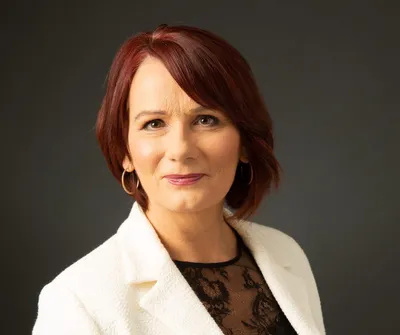
Ije Jidenma,Founder, Managing Partner, Kestria Nigeria highlights that future-ready leadership is fundamental in the fast-evolving world. 'The rate of change is phenomenal and the leaders we need are not just those who can manage today’s challenges but those who demonstrate potential for development and go further, imagining and acquiring the capabilities to make future-oriented decisions and solve complex problems. Strategic thinking is central to this.
In business, it’s no longer just about the bottom line. Emergent forces, people (employees, customers, suppliers, communities) and the planet (net-zero, sustainability) are increasingly critical.
Strategic leaders must also stay ahead of rapid technological shifts and global uncertainty, from geopolitical dynamics to economic instability. They must anticipate and respond swiftly to ensure their organisations remain agile and resilient.
Agility is key to adapting to system-wide shifts. Sometimes, entire frameworks change, challenging the traditional view of strategic planning as a long-term, fixed process. Today, planning must be dynamic and adaptive, as the assumptions behind it can shift rapidly. Technological advancements and innovation are major drivers of this change - consider Uber’s disruption of transport, drones’ impact on agriculture and healthcare, or how virtual meetings have reshaped international board engagements. Many of these shifts were hard to predict.
Future-ready leaders recognise evolving expectations around sustainability, diversity and corporate responsibility. Their ability to integrate these into strategic decisions is essential for long-term success and positive societal impact.
A growth mindset and holistic perspective are essential traits of such leaders. Thinking in terms of environmental, societal and community impact, well ahead of time, is what defines a truly visionary leader. Vision is about possibilities, and it is, by nature, limitless.'

‘There's one emerging skill set that is critical for tomorrow's business leaders, and that is the ability to pivot a business quickly and effectively. In a world shaped by more frequent black swan events, relentless technological change and intense global competition, the ability to pivot is the single most critical skill that transcends the traditional leadership qualities for talent acquisition.’
Characteristics and development of visionary strategic leaders

Iluta Gaile,Managing Director, Kestria Latvia, outlines key traits of leaders excelling in strategic thinking: 'When interviewing high-level executives, I often notice their “helicopter view”—the ability to see the bigger picture. This is crucial for leadership, as organisations face communication issues, cultural misalignment and gaps between strategy and daily operations.
Systems thinking encourages a broader perspective, considering how issues affect the entire organisation and how solving one problem might impact others. It helps identify key areas for improvement, such as resource allocation, processes, or communication flows. Leaders with this mindset can grasp overarching trends and relationships while managing the details critical to success. Most importantly, systems thinking supports decisions that consider both immediate consequences and long-term impact.
Decision-making is one of the most essential leadership competencies. Strong leaders stand out by making balanced decisions, even in uncertainty. This has been vital over the past five years, with challenges like the Covid-19 pandemic, Russia’s invasion of Ukraine, and U.S. tariff challenges creating instability—but also opportunities.
Navigating uncertainty requires balancing risks and rewards. Successful leaders combine flexibility, data, intuition, collaboration, and long-term thinking to respond effectively. Ultimately, they make sound decisions in vulnerable situations—precisely what organisations expect.
Another key leadership trait is the ability to inspire and motivate teams. Effective leaders not only create a vision but also inspire belief in it and foster active participation.
When vision is communicated clearly and inspiringly, it boosts motivation, collaboration, and success. In Latvia, several companies have thrived through crisis thanks to strong leadership and effective internal and external communication.
For communication to work, leaders must truly believe in their vision and stay consistent—otherwise, the outcome may fall short.'
Iluta Gaila also shares practical strategies to cultivate strategic thinking: 'I was inspired by a recent TV segment about a Latvian woman who moved to Canada in 1949. Now 112, a former art teacher, she shared her secret to a long life: "Keep learning, stay curious and be open to the world."
Lifelong learning is essential not only for personal growth but also for organisations and their leaders. It helps spot new opportunities, adopt innovative technologies and make data-driven decisions.
Organisations should foster inclusive environments that welcome diverse perspectives - this leads to stronger strategic outcomes. Leaders, in particular, must leverage data and AI to back their decisions with real-time insights, optimise resources and boost efficiency. In today’s fast-changing world, staying curious and open isn’t just wise advice, it’s a leadership imperative.'
Strategic thinking in executive search and organisational success

Oana Blanea, Associate Business Partner, Kestria Canada & USA, emphasises that amid constant transformation, strategic thinking is a core leadership competency - essential for anyone tasked with steering an organisation toward long-term success. 'At the executive level, this competency signals the ability to synthesize complex variables, anticipate market shifts and make decisions that create value beyond the next quarter.
When assessing high-level talent, we consistently find that those who excel don’t just have strong operational track records—they demonstrate the ability to navigate ambiguity, connect seemingly disparate trends and move fluidly between the tactical and the visionary. These leaders operationalize strategy, drive alignment across teams and create cultures built on long-term thinking.
As global executive search partners, we’re seeing a growing demand for leaders who bring not only technical and functional expertise but also a deeply strategic mindset—one that considers the social, environmental, technological and geopolitical forces reshaping business. Our clients increasingly want leaders who can deliver results now while preparing the business for what’s ahead.
The story of Kodak offers a cautionary example. Despite inventing the first digital camera in 1975, Kodak’s leadership chose to protect its film business rather than embrace the future of photography. That reluctance to think and act strategically cost them their market leadership—and ultimately led to bankruptcy. In a more recent example, Hudson’s Bay—one of North America’s oldest retailers—struggled to adapt to the rise of e-commerce and shifting consumer behaviors. After years of declining sales, leadership turnover and underinvestment in digital infrastructure, the company filed for creditor protection in March 2025 and began liquidating all its stores by April. Both cases serve as powerful reminders that even the most iconic companies can falter without leaders who are willing to challenge assumptions, adapt early and shape what comes next.'
Overcoming barriers to strategic thinking

Rohan Carr, Director, Kestria Australia, stresses that in a fast-moving and often unpredictable environment, strategic thinking is more critical than ever. 'To quote Bill Gates, “You have to run the company day-to-day, but you also have to leave time for thinking about the future. If you don't, you won't have one.”
Yet many leaders struggle to find the time, clarity, or perspective required to think strategically. Despite the importance of long-term vision, day-to-day pressures often keep leaders focused on the short term. The biggest challenge is the tyranny of the urgent - constant firefighting leaves little room for stepping back to consider broader shifts. Addressing this starts with deliberately carving out time for reflection, whether through structured strategy sessions or regular off-site retreats.
Another obstacle is cognitive bias, where leaders unconsciously filter information contradicting existing beliefs, and groupthink, where consensus limits innovation. Creating psychologically safe spaces for debate and inviting diverse viewpoints helps counteract this. External facilitators or advisors can also bring fresh perspectives.
Siloed thinking is another common barrier. Promoting collaborative problem-solving across teams and aligning everyone to a shared vision fosters integrated thinking.
A further challenge lies in limited access to relevant data or insights. Leaders may feel they lack the necessary information to make informed strategic decisions. Investing in better data systems, and importantly, building the capacity to interpret and act on insights, is key to closing this gap.
Finally, some leaders may lack confidence or training in strategic thinking. Strategy is sometimes seen as the domain of a few senior executives, rather than a mindset that can be developed. Embedding strategic thinking as a core leadership competency and offering development opportunities at all levels can shift this perception.
Overcoming these barriers requires intention. By recognising these common pitfalls and taking practical steps to create space, build capability, and encourage curiosity, leaders can strengthen their organisation’s strategic muscle and better navigate an uncertain world.'
Conclusion
Strategic thinking is no longer optional—it’s foundational. Leaders who broaden their perspective, embrace continuous learning, and integrate diverse insights can better anticipate challenges and seize opportunities. Overcoming barriers like short-term pressures and siloed thinking requires deliberate effort and a commitment to reflection and collaboration. Embedding strategic thinking into culture boosts resilience, drives innovation, and secures long-term success in a complex global landscape.

